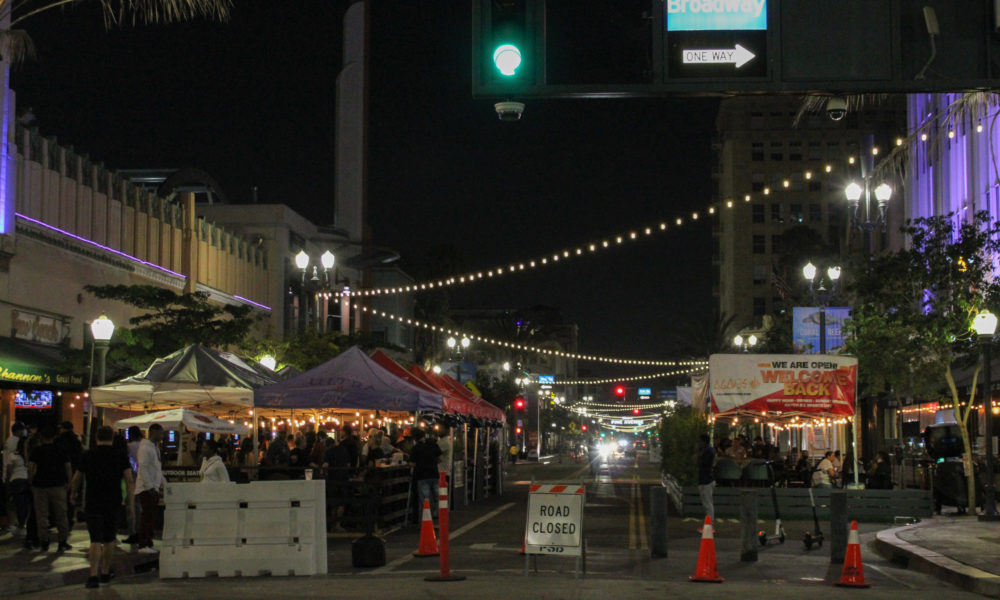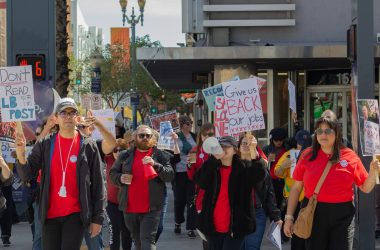Starting Monday, businesses in Long Beach will be reopening with limited capacity including indoor dining at restaurants, indoor gym facilities and movie theaters, officials announced in a press release Friday.
Under California’s Blueprint for a Safer Economy, the city will be transitioning from the purple tier to the red effective March 15, indicating substantial risk rather than widespread. Los Angeles County has also moved into the red tier.
“Moving into the Red Tier shows we are making progress in reducing the spread of COVID-19,” Mayor Robert Garcia said in the statement. “We can begin to expand business operations in the Red Tier, but we still have work to do and we must remain vigilant. Our actions will continue to guide our progress.”

Restaurants will be able to reopen under 25% capacity or 100 people, whichever is fewer. To maintain social distancing standards, tables must have tables separated by at least eight feet, and customers and workers must be separated by six feet.
Bars with no meal service must continue with outdoor operations, according to the city measure.
Gyms and fitness centers will be able to operate at 10% capacity, though outdoor operations are “strongly encouraged” by city officials. Movie theaters, places of worship, aquariums, museums, galleries and botanical gardens may reopen indoors at 25% capacity.
An increase from 25% capacity, retail businesses may operate at 50% starting Monday.
Also permitted are private gatherings among three households and no more than 15 people, as long as everyone wears face masks. Those who are fully vaccinated, however, may congregate in private settings without facial coverings.
Although the red tier permits institutes of higher education to allow indoor lectures and student gatherings with proper safety modifications at 25% capacity or 100 people maximum, Long Beach State is continuing with only 4% face-to-face courses this spring.
Starting April 1, outdoor live events, including sports and live performances, may become eligible to operate at 20% capacity as long as venues enforce worker coronavirus testing and enforce safety regulations.
“It is critical to the long term safety, recovery and stability of Long Beach that everyone remains vigilant in practicing all health and safety protocols outlined in the Safer at Home Health Order, including wearing a face covering and maintaining proper physical distance from others, even if they have received COVID-19 vaccinations,” the statement said.
According to the press release, the city takes into account three factors when determining whether to progress into a new tier: the number of new cases daily, the positivity rate of COVID-19 tests and the health equity metric, which is “designed to address the disproportionate case rate of COVID-19 among certain populations” and is based on economic, social, education, transportation, housing and environmental factors.
“In order to move to a less restrictive tier, the lowest-resourced areas must meet a certain positivity threshold,” the statement said. “The health equity metric ensures that individuals affected most by the pandemic are doing well enough that moving the county to the next tier is safe for everyone.”

To progress from the red tier to the orange tier, or moderate risk, LA County must remain in the red tier for at least three weeks and maintain “orange tier numbers” for two consecutive weeks.
As of March 11, Long Beach has seen 51,600 total cases and 882 total deaths and has vaccinated 85,638 residents.





Pingback: LA County enters yellow tier, allowing for looser restrictions and higher capacities - Daily Forty-Niner
Pingback: CSULB to host in-person commencement for the class of 2020 and 2021 - Daily Forty-Niner
Pingback: CSULB to reopen rec center and child development center in April - Daily Forty-Niner
Pingback: Everything you need to know about commencement for the classes of 2020-21 - Daily Forty-Niner
Pingback: BREAKING: CSULB to consider in-person commencement this May pending governor approval - Daily Forty-Niner